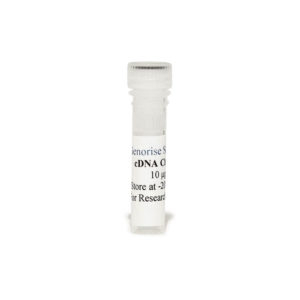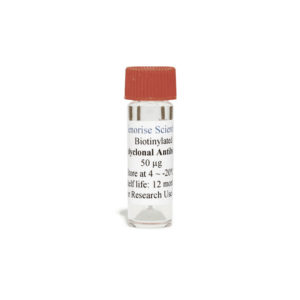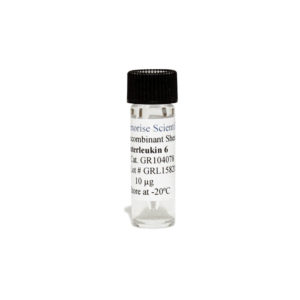Recombinant Human MMP-3 Protein
$99.00 – $2,280.00
The recombinant human MMP-3 protein is derived from in vitro expression of human MMP-3 gene in E. coli and purified using his-tag affinity column and can be used in multiple applications such as cell culture, ELISA and western blot.
Alternative names for MMP-3: Matrix metalloproteinase-3, MMP3, Stromelysin-1, STMY1
This product is for Laboratory Research Use Only not for diagnostic and therapeutic purposes or any other purposes.
- Description
- Product Citations
- Reviews (0)
Description
Genorise Recombinant Human MMP-3 Protein Summary
Alternative names for MMP-3: Matrix metalloproteinase-3, MMP3, Stromelysin-1, STMY1
Product Specifications
| Purity | > 95%, by SDSPAGE under reducing conditions and visualized by silver stain. |
| Endotoxin Level | < 1 EU per 1 μg of the protein by the LAL method. |
| Activity | Measured by its ability to cleave a fluorogenic peptide substrate Mca-RPKPVE-Nval-WRK(Dpa)-NH2. The specific activity is 150 pmol/min/µg, as measured under the described conditions. |
| Source | E. coli derived human MMP-3 |
| Accession # | P08254 |
| N-Terminal Sequence Analysis | Asp |
| Amino Acid Sequence | Asp131-Cys477 |
| Predicted Molecular Mass | 38 kDa |
| SDS-PAGE | 38 kDa, reducing conditions |
Background:
MMP-3 is a member of the matrix metalloproteinase (MMP) family are involved in the breakdown of extracellular matrix and during tissue remodeling in normal physiological processes, such as embryonic development and reproduction, as well as in disease processes, such as arthritis, and tumour metastasis. Most MMPs are secreted as inactive proproteins which are activated when cleaved by extracellular proteinases. The MMP-3 enzyme degrades collagen types II, III, IV, IX, and X, proteoglycans, fibronectin, laminin, and elastin. In addition, MMP-3 can also activate other MMPs such as MMP-1, MMP-7, and MMP-9, rendering MMP-3 crucial in connective tissue remodeling.[1]The enzyme is thought to be involved in wound repair, progression of atherosclerosis, and tumor initiation. Expression of MMP3 is primarily regulated at the level of transcription, where the promoter of the gene responds to various stimuli, including growth factors, cytokines, tumor promoters, and oncogene products.[2] Recently, the MMP-3 gene was shown to be down-regulated in individuals with cleft lip and palate when compared to controls,[3] reinforcing the nature of cleft lip/palate as a condition resulting from insufficient or defective embryonic tissue remodeling.
References
- Ye S, et al. (1996). J. Biol. Chem. 271 (22): 13055–60.
- Matrisian LM (1990). Trends Genet. 6 (4): 121–5.
- Bueno DF, et al. (2010). Stem Cell Rev 7 (2): 446–457.
Product Citations
Be the first to review “Recombinant Human MMP-3 Protein”
You must be logged in to post a review.




























Reviews
There are no reviews yet.